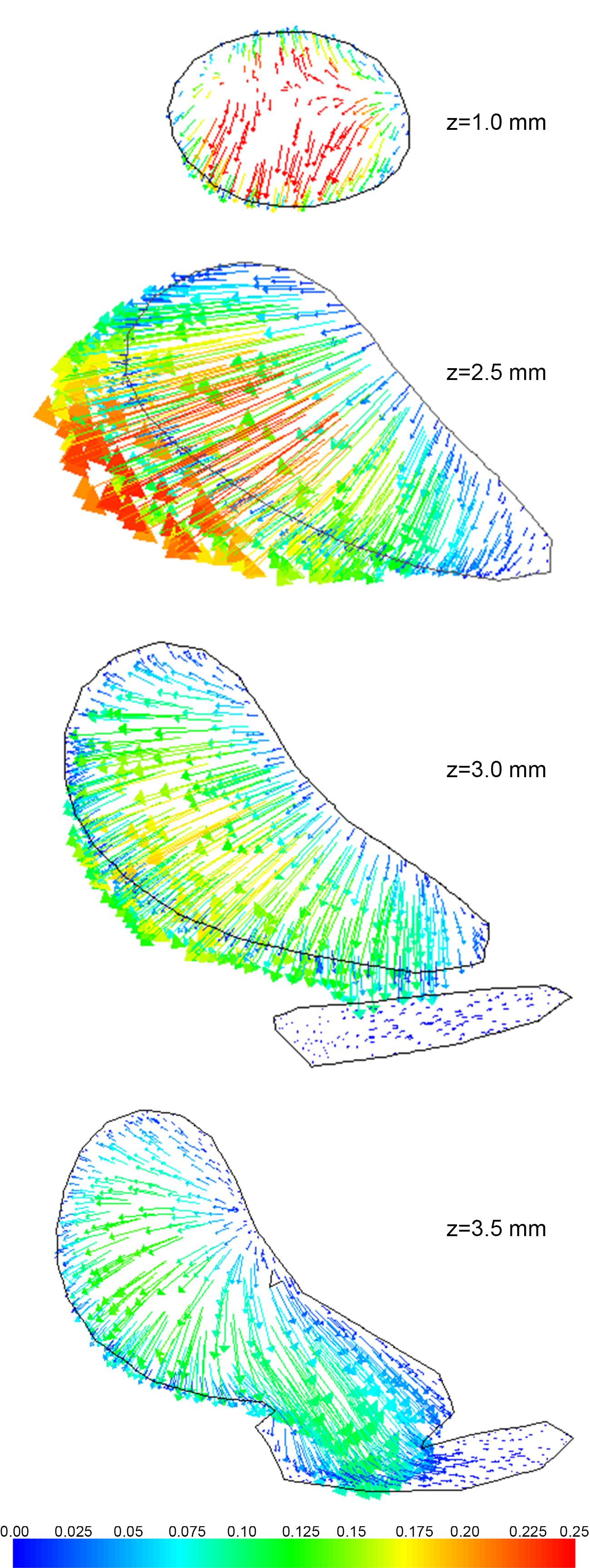The aerodynamic filtering system of the sandfish skink
Anna T. Stadlerׂׂׂׂ(*1), Michael Krieger(2), Werner Baumgartner(1)
1 Institute of Biomedical Mechatronics, Johannes Kepler University Linz, Altenberger Str. 69, 4040 Linz, Austria
2 Institute of Fluid Mechanics and Heat Transfer, Johannes Kepler University Linz, Altenberger Str. 69, 4040 Linz, Austria
The sandfish lizard spends nearly its whole life in aeolian sand and only comes to the surface for foraging, defecating and mating. To understand how the animal can respire without sand particles entering its respiratory organs we conducted biological studies. A detailed histology of the upper respiratory system surprised us: We could find no filtering system, such as fine hair or narrows. However, its morphology is somewhat peculiar: The vestibulum is a narrow rounded channel leading to a kind of »chamber«, where cilia and mucus are present. At its posterior end the chamber separates into an olfactory and a respiratory tract. The ventilation patterns are characterized by an intense, cough-like exhalation (40 ms) and a slow long-lasting inhalation (2 s). These findings suggest that the sandfish has an aerodynamic filtering system [1]. We studied this filtering system by integrating experiments and computational fluid dynamics (CFD) simulations in order to obtain the flow profile and particle flow. We determined the adhesion forces acting between mucus and sand particles and the velocities to overcome these forces. In this context we explore the possibility to optimize state of the art filtering systems. A biomimetic aerodynamic filtering system based on the upper respiratory organ of the sandfish would have several advantages: due to low velocities and the absence of a filtering membrane the system would be silent, low-maintenance and energy-efficient.

Figure 1: Cross-flow velocity vectors colored by velocity magnitude during inhalation in four different cross-sections. The variable z denotes the distance from the inlet.

Figure 2: Particle trajectory of one representative particle with 0.15mm diameter.